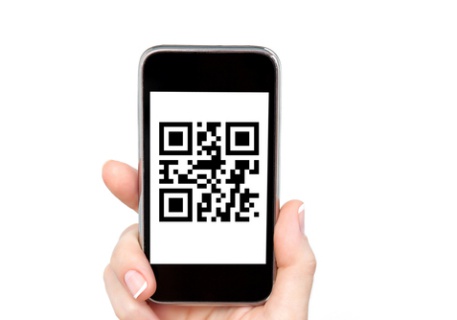QR Codes Are Gaining A Brighter Profile

The QR Code has been enjoying some love and attention over the past few weeks, though the prospects for the digital payment tool remain relatively limited outside of Asia, at least according to one report.
First up, EMVCo, the global technical body that manages those payment specifications, just introduced what it calls a QR Payment Mark. The idea is to “promote global interoperability across EMV QR Code payments,” the standards group said in a statement. Implemented last year, the group’s EMV QR Code Specifications are designed to address transactions where the consumer presents the code, and also where the merchant does so.
The Future of QR Code Payments
The QR Payment Mark will not only tell consumers that a particular merchant employs the digital payments tool, but serve as an application indicator on a consumer’s mobile device. The general idea is to build momentum for further deployment and use of QR Codes, according to the group. More of that momentum seems likely to emerge from India, where officials are aggressively trying to build a cash-free — or, at the least, cash-lite — society, a push that included the late 2016 ban of 500- and 1,000-rupee Indian notes.
Earlier this month, the United News of India reported that the Confederation of All India Traders (CAIT) — which says it represents 60 million of the country’s smaller merchants and traders — “has launched a nationwide campaign to popularize BharatQR,” a digital payments tool backed by the likes of Visa, Mastercard and the government-supported National Payments Corporation of India (NPCI). The CAIT reportedly wants India to adopt BharatQR as the country’s single QR payment tool, and to have closed-loop QR systems conform to BharatQR standards. Doing so would reportedly encourage more of those smaller merchants and traders to accept digital payments.
If not ubiquitous throughout the world, the QR Code is certainly familiar to many consumers, and those two recent bits of news stand as evidence that the tool has important fans and backers — people who see a bright future for it. For instance, the message app WhatsApp, which also enables payments, recently said it would support QR codes.
Earlier this month, COO & VP of Engineering Ron Yagur at Sodyo, talked to PYMNTS about how QR codes could bridge the online and offline worlds — making it possible for consumers to order from, say, a home shopping network without having to call a 1-800 number, among other tasks that range from direct commerce to audience engagement.
That said, there exists limits to that optimism.
For one, QR Codes — introduced in 1994 for manufacturing tasks, and now used in some 200 countries — compete with near-field communication (NFC) for consumer and merchant loyalty, noted a Juniper report that focused on the prospects for those codes as payments become more mobile.
“By far, the most successful deployments of QR Code-based payments have come in China, where these have already surpassed cash and cards in both in-store transaction volume and values,” the report said. “Deployments elsewhere are sporadic, but the mechanism has been a mainstay of Scandinavian wallets for several years and is also gaining traction in India.”
The Risk Potential
The report also sounded an alarm about the security of QR codes. That’s because researchers in Hong Kong “found that it was possible to gain access to the phone’s camera to record an image of a QR Code. Furthermore, as QR Codes can contain any kind of data (not just payment/transaction details), it is possibly to create codes containing links to malware or phishing sites,” Juniper said.
That risk was behind The People’s Bank of China’s implementation in April of an approximately $80 spending cap for QR-based payments. That cap applies to transactions that require scanning a printed QR codes displayed by a merchant, and involves payment services operated by Alipay and WeChat Pay.
Still, QR codes in the coming months and years are likely to find support from low-income consumers and the merchants that serve them, according to a recent analysis from the Consultative Group to Assist the Poor (CGAP), a group that advocates for financial inclusion.
Though acknowledging that it remains “unclear whether the adoption of QR Code payments” will lead to more financial inclusion (the idea being that they are easier than cash for low-value transactions), the group pointed to the lower operating costs and acquiring expenses as reasons for optimism. Along with that, the use of QR Codes reduces the need to distribute debit cards to such consumers.
CGAP said, “These factors make QR codes a potential game-changer in retail proximity payments, and this may have real consequences for large-scale adoption of digital financial services among financially underserved populations. Retail payments are used multiple times a day, whereas other financial transactions — cash-in, cash-out, remittance — are used usually once a week or every few weeks. Given their frequency, retail payments have greater potential to get people into the habit of using digital financial services.”